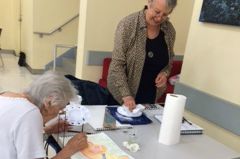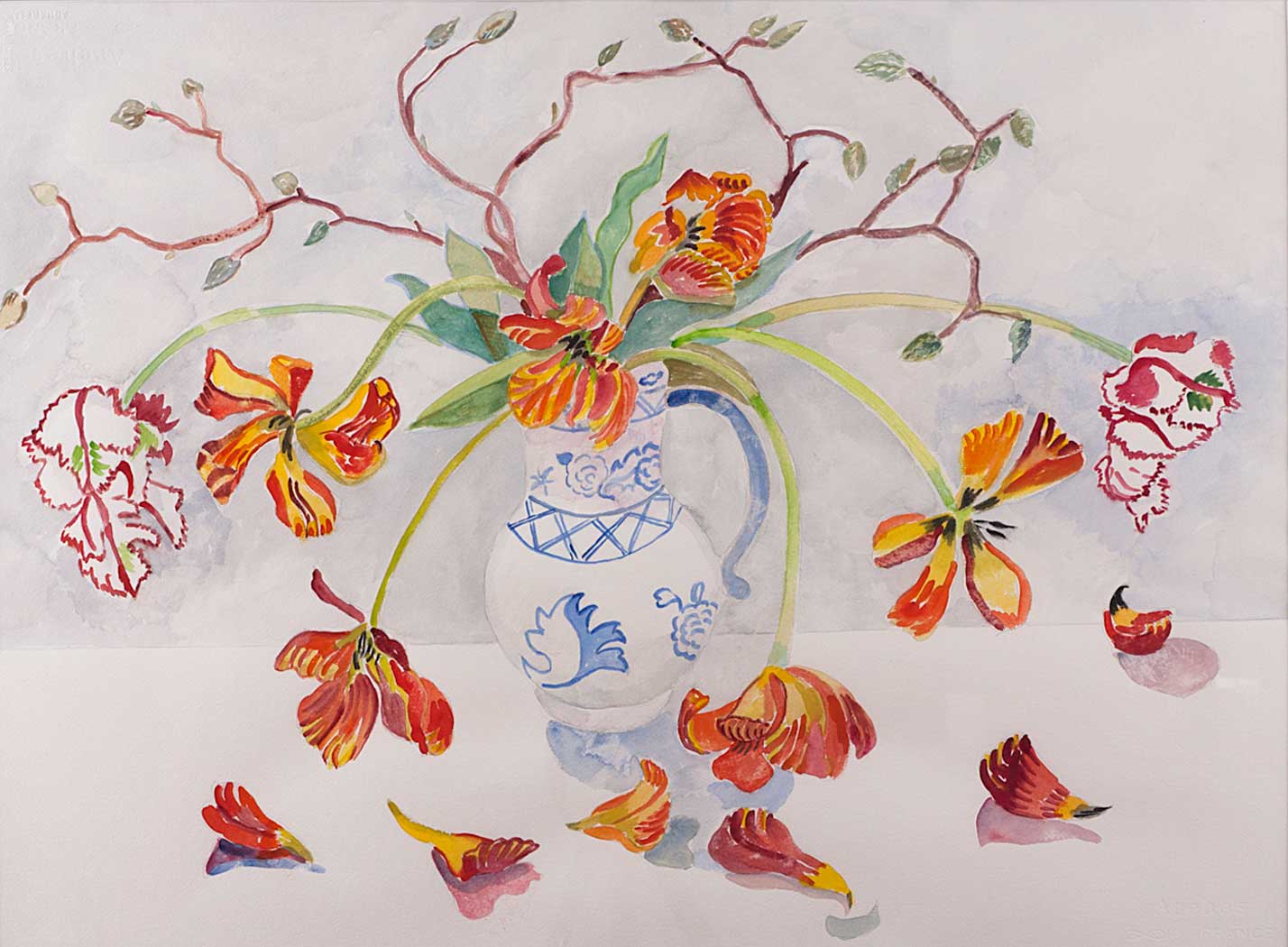
The objectives of the Brooklyn Watercolor Society are to further the creative efforts of its members, to spread knowledge and cultivate interest in the transparent watercolor medium.
Stephanie Rauschenbusch
Watercolor Artist

Stephanie Rauschenbusch
Artist Statement
My real work began in 1970 when I ceased studying for a doctorate in English and Comparative Literature at Columbia and rented a studio on Amsterdam Avenue to work on oil still life paintings. I had studied art formally and in depth at Cathedral School in Washington, D.C.and had continued painting through four years at Radcliffe/ Harvard where there were no art classes. I continued this practice at Columbia, working in photos as well as paintings and collages.
In the ’70s, I often painted still life oils with lobsters, mussels, and other crustaceans and shellfish, combined with bread, with wine bottles, with an antique whisky bottle that reflected the entire still life. These works evolved into extremely detailed paintings with patterned cloths that showed many shadows and colors. In the early 1980’s, the work evolved into a larger format, sometimes five by six feet, and incorporated such complex motifs as a diamond-pane mirror in which a self-portrait was reflected along with my son’s nude portrait at three years old and with still life objects. At this point, I used a large blue and white batik cloth, and placed on it art books, exhibition catalogues, and autobiographical artifacts such as hats, dresses, gloves, tea pots and cups. The still life was then clearly situated in a brownstone parlor, with wood panelling and windows behind the still life.
Once I had rented a studio in DUMBO, I began to incorporate the bridge landscapes I could see behind my still life set-ups. I also used studio tools and a sculptured torso in some of the works. This led to years of working in landscape along with still life, learning to paint in watercolors and working outdoors in such locations as Greece, Sicily, Yorkshire and Cornwall, England, and Venice and Fiesole in Italy. I also in the 1990’s often used a grid in landscape oils and watercolors as well as in some still life paintings.
In 2006, after seeing a Pieter Claesz oil in the Louvre with a live tortoise in it, I began a series of large oils using many seventeenth century Dutch still life motifs. In “Blue Studio” and “Little Breakfasts” I’ve painted two new series that include books of still lifes I love.




